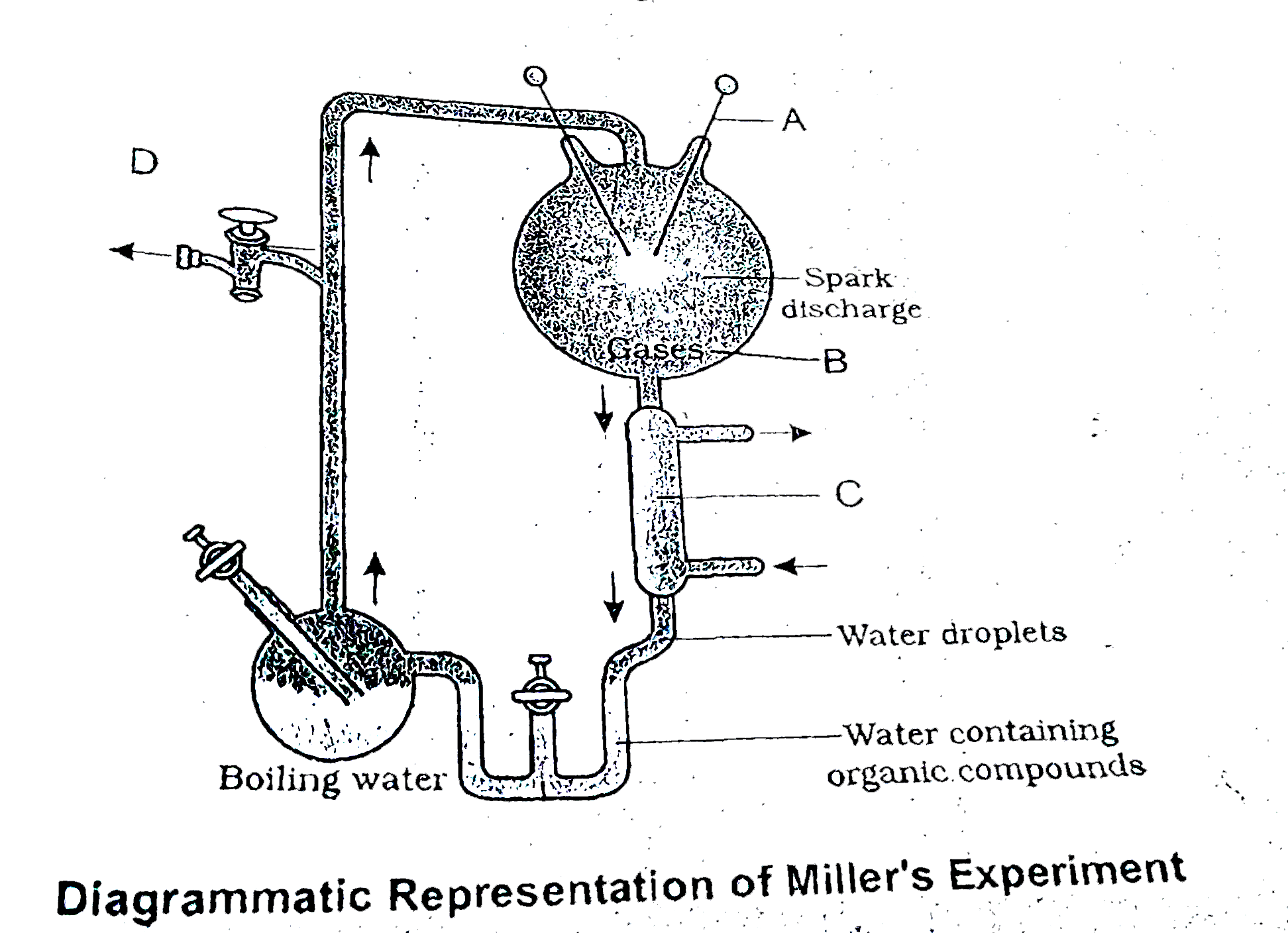Stanley Miller's experiment supports
Abiogenesis
Biogenesis
Pangenesis
Chemical theory
The correct Answer is:D
Step-by-Step Solution:
1. Understanding Stanley Miller's Experiment:
- Stanley Miller conducted an experiment in 1953 to simulate the conditions of early Earth. He aimed to test the hypothesis that organic compounds necessary for life could be formed from inorganic precursors.
2. Setup of the Experiment:
- Miller created a closed system that included water, methane, ammonia, and hydrogen. He used electrical sparks to simulate lightning, which was thought to be a common occurrence on early Earth.
3. Results of the Experiment:
- After running the experiment for a week, Miller found that several organic compounds had formed, including amino acids, which are the building blocks of proteins.
4. Implications of the Findings:
- The results supported the idea that life could have originated from simple chemical processes. This provided evidence for the chemical theory of the origin of life, suggesting that life arose from the natural synthesis of organic molecules from inorganic substances.
5. Distinguishing Between Theories:
- The chemical theory posits that life originated from chemical reactions involving inorganic compounds. In contrast, biogenesis suggests that life arises from pre-existing life, and pangenesis is related to heredity, not the origin of life.
6. Conclusion:
- Therefore, Stanley Miller's experiment supports the chemical theory of the origin of life, as it demonstrated that organic molecules could be synthesized from inorganic materials under conditions thought to resemble those of early Earth.
Final Answer:
Stanley Miller's experiment supports the chemical theory of the origin of life.
---
- Stanley Miller conducted an experiment in 1953 to simulate the conditions of early Earth. He aimed to test the hypothesis that organic compounds necessary for life could be formed from inorganic precursors.
- Miller created a closed system that included water, methane, ammonia, and hydrogen. He used electrical sparks to simulate lightning, which was thought to be a common occurrence on early Earth.
- After running the experiment for a week, Miller found that several organic compounds had formed, including amino acids, which are the building blocks of proteins.
- The results supported the idea that life could have originated from simple chemical processes. This provided evidence for the chemical theory of the origin of life, suggesting that life arose from the natural synthesis of organic molecules from inorganic substances.
- The chemical theory posits that life originated from chemical reactions involving inorganic compounds. In contrast, biogenesis suggests that life arises from pre-existing life, and pangenesis is related to heredity, not the origin of life.
- Therefore, Stanley Miller's experiment supports the chemical theory of the origin of life, as it demonstrated that organic molecules could be synthesized from inorganic materials under conditions thought to resemble those of early Earth.
Stanley Miller's experiment supports the chemical theory of the origin of life.
Topper's Solved these Questions
Similar Questions
Knowledge Check
The ratio of methane, ammonia and hydrogen in Stanley Miller's experiment was
A3:1:2B2:1:2C1:2:1D5:4:1Which was absent in Miller's experiment?
AVacuum pumpBElectrodesCCondenserDNone of theseIn Miller's experiment, the gaseous mixture in the flask contained:
AMethane, ammonia, carbon dioxide and heliumBCarbon dioxide, hydrogen, water vapour and ammoniaCAmmonia, methane, hydrogen and water vapourDHydrogen, ammonia and methane and helium
Stanley Miller in his experiment to prove the Oparin-Haldane hypothesis used ……….and……...in the spark chamber.
View SolutionThe most common chemical compounds formed in Urey-Miller's experiment were
View SolutionWhich gases were taken by Stanley Miller and Harold Urey in their experiment to support biochemical origin of life and why?
View SolutionIn simimlar experiments like Miller's experiment, which products were obtained?
View SolutionFollowing is the diagrammatic representation of Miller's experiment. What is correct labelling? Choose the correct option.

View Solution